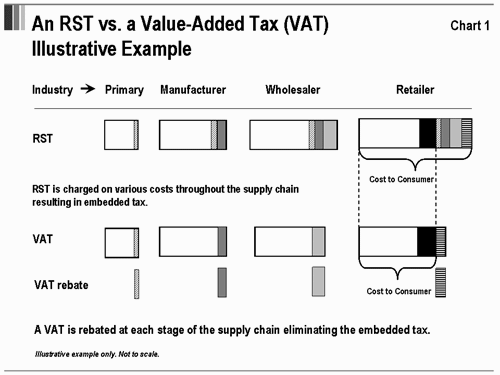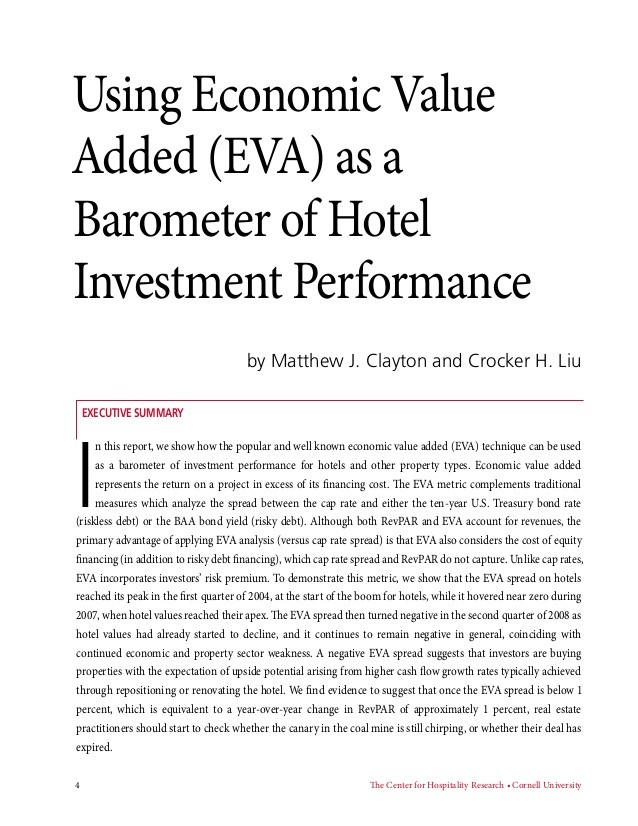Chapter 26 Economic Value Added
Post on: 16 Март, 2015 No Comment

Economic value added (EVA) is a variation of residual income. Like residual income and return on investment, it is a tool used to evaluate the performance of investment centers. It focuses on a major goal of companies which is to add shareholder value.
How Does EVA Differ From Residual Income
A company’s net worth increases as the economic value adding process occurs, much the same way it occurs with residual income. However, EVA is a better method of evaluating performance because it takes away the incentive for managers to ignore spending money on projects or programs that make the company’s value increase in the long-run. EVA helps solve over-investment and under-investment problems in much the same manner as residual income, while adding the benefit of encouraging managers to spend money on strategic benefits.
Managers of investment centers know that they will be evaluated on how effectively they use assets to generate income. They put significant effort towards maximizing profit knowing this will reflect a better performance evaluation, which translates into a pay increase or bonus. In attempting to maximize their bonuses by increasing profit, managers will spend as little as possible on expenses because they reduce income in the short-run. However, reducing some of these expenses in the short-run creates a detrimental effect in the long-run competitiveness of a company. Three of these expenses are research and development (R&D), customer development, and employee training. These items are referred to as accounting distortions because they are amounts that are expensed as they are incurred, despite the fact they impact the long-run competitiveness of a company.
Accounting Distortions
Accounting distortions are costs that GAAP requires companies to expense as they are incurred, despite the fact that these ‘improvements’ typically benefit the company over the long-run. If the company treats them as if they benefit the long-term, (i.e. as capitalized assets) only a portion of the expense would impact profit each period. Because GAAP requires the entire cost spent on these items to be expensed when they are incurred, profit declines immediately for the entire cost—in the short-run. This decline in profit makes managers appear to be performing poorly. Because of this, managers avoid spending amounts for certain costs, and as a result, often hinders the competitiveness of the segment and the company as a whole in the long-run.
Examples of Accounting Distortion Costs
Employee training costs
Customer development costs
GAAP Justification
Assets are economic benefits that are expected to provide future benefits for a company. Spending money on R&D does not mean a new product or process will definitely be developed. There is no assurance of ‘if’ there will be future benefits, and ‘when’ any future benefits will occur. As such, R&D, employee training, and customer development costs do not meet the definition of an asset, so they cannot be treated as assets for GAAP purposes.
EVA Adjustments
For performance evaluation purposes, EVA makes adjustments for costs that are considered to be accounting distortions by treating them as if they are capitalized assets instead of the GAAP-mandated treatment as expenses. A larger profit results when these costs are capitalized which softens the effect that expenses have on income by spreading the cost over a longer time period. Because current period income is generally higher under EVA than traditional residual income, managers will more likely spend money on costs such as these. EVA compels managers to invest (i.e. spend money) in the range between the required rate of return and the company’s current ROI.
Companies who fail to spend money on R&D run into the risk of its competitors luring its customers away. Customers prefer to do business with companies that keep up and make product or other operational changes, i.e. spend money on R&D. Customers also prefer to do business with companies that have properly trained their employees, i.e. spending money on employee training. They also prefer to do business with companies that go out of their way to meet their needs, i.e. the concept of customer development. Profits may not increase immediately when managers spend money on these ‘improvements,’ however, in the long-run, the company is adding value and attracting attention for the future.
Calculating EVA
EVA is a variation of residual income—the amount of ‘profit’ the company earned that exceeds the cost of financing the assets in the segment. The cost of financing is based on the weighted average cost of capital (WACC):
Residual income = NOPAT [WACC x Invested capital]

Adjustments are made to increase income and to capitalize the costs as assets. The effect of capitalizing the costs spent on ‘improvements’ increases the amount of profit by removing the costs from income, while at the same time causes assets to increase by capitalizing the costs. The EVA calculation is:
EVA = [NOPAT +/- Accounting distortions] WACC x [Invested capital + Accounting distortions]
The adjustment to NOPAT will differ from the adjustment to invested capital because the adjustment to NOPAT modifies income which requires an income tax effect, and the adjustment to invested capital modifies assets on the balance sheet with no income tax effect. The steps to calculate EVA are:
Step 1: Identify the amounts the segment spent on accounting distortions for all years involved—R&D, employee training, and customer development.
Step 2: Begin with the oldest year for which improvement costs were incurred. Calculate adjustments to invested capital by determining how much total assets would differ if the amount spent on improvements had been capitalized instead of expensed. No income tax effects impact balance sheet amounts.
Step 3: Calculate the adjustment to NOPAT for the current year by determining how much pretax income would differ for that year if the amounts had not been expensed.
Step 4: Factor in the income tax effects on the income adjustment for the current year, to create a ‘net of tax’ income amount.
Step 5: Add the additional or subtract the reduction of the ‘income’ adjustment.
Step 6: Add the additional assets to invested capital.














